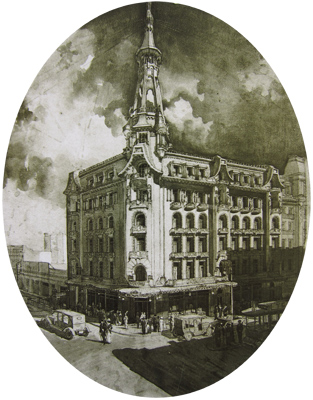
In the past ten years, Buenos Aires has come a long way in terms of preserving city heritage. New organizations have formed, especially on neighborhood level, keeping watch over the city’s buildings & blowing the whistle when sneaky developers try to destroy what makes BA so unique. That said, one particular building sums up everything wrong about the city’s attitude toward conservation: the Confitería del Molino.
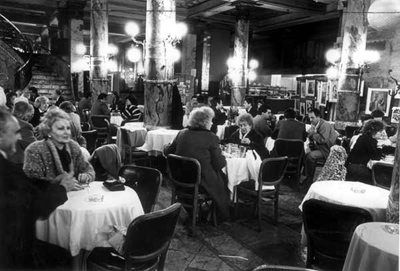
Sitting alongside national Congress & capping off Avenida de Mayo, the Confitería del Molino seen today dates from 1916. But the successful pastry shop has a much longer history, beginning just after independence from Spain. At the intersection of Rivadavia & Rodríguez Peña —one block away from its current location— a mill & the corresponding shop for its baked goods began operation in 1821. Almost four decades later, it became known as the Confitería del Molino. The business was acquired in 1886 by Gaetano Brenna who had a clear vision of making the best sweets in Buenos Aires.
Part of Brenna’s business plan included expanding his facilities. Purchasing two buildings & a warehouse at the intersection of Callao & Rivadavia, Brenna hired immigrant Italian architect Francisco Gianotti to join the three structures & build up, up, up. Gianotti wasted no time during the six years he had been in Argentina, already having built several apartment buildings & just completing the Galería Güemes the previous year. He was definitely one of the star architects of the moment. Brenna made Gianotti promise not to interrupt normal, day-to-day business of the confitería & the results were spectacular.
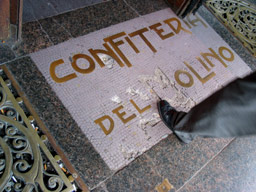
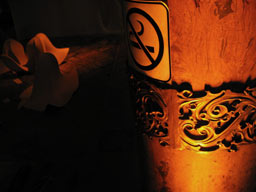
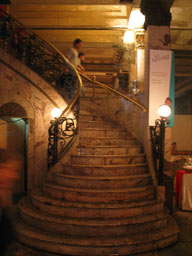
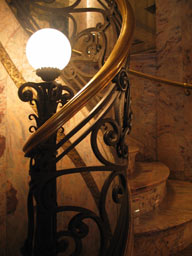
Given its location at one of the most important intersections in the city center & adjacent to Congress, the Confitería del Molino quickly became the success Brenna had envisioned 20 years earlier. Politicians, tango celebrities like Tita Merello, foreign dignitaries, everyone hung out there. The most significant historical moment witnessed by the building was a riot during the 1930 military coup. Shots were fired into the air by a Captain from one of the balconies. Crowds in front of Congress stormed the building, trashing the place & the mounted police had to enter with their horses to restore order. Damage was repaired the following year but cracks in the marble floor tiles remain from the event.
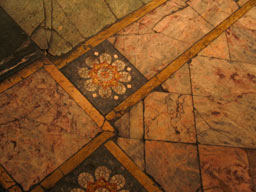
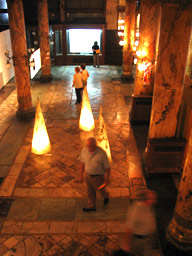
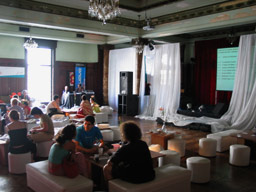
Unfortunately, business began to decline in the 1950s & each coming decade brought new challenges for the Brenna family to overcome. Shortly after filming a scene for the Alan Parker version of “Evita” plus a video for the Madonna release “Love Don’t Live Here Anymore,” the Confitería del Molino closed its doors forever. Since Jan 1997, the building was opened only once to the public during Estudio Abierto 2004. Interior photos posted here date from that exhibit.
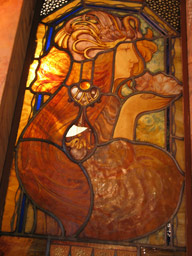
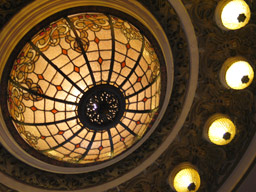
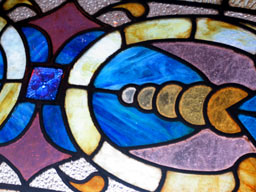
As of 2000, stained glass in the dome was intact but most panes had broken by 2005 & were removed as a safety measure. Statues which crowned upper niches have crumbled & disappeared. For most of 2007 & 2008, a homeless man was allowed to camp at the main entrance. Even though metal sheeting covers the ground floor, damage was probably done to the building. In 2010, another statue, located above the main entrance, disappeared. And everyday pollution hides most of the decoration on this once colorful building.
Occasionally an article appears in local newspapers stating that Congress is working on a project to save the building or that a local investor is interested, but to date absolutely nothing has been done. The fact that everyone loves this building —even in spite of its current condition— should spur more action. Supposedly protected by the Comisión Nacional de Museos y de Monumentos, the only visible action taken by the them is using my photos of the interior without permission… obviously copied from the previous incarnation of this blog.
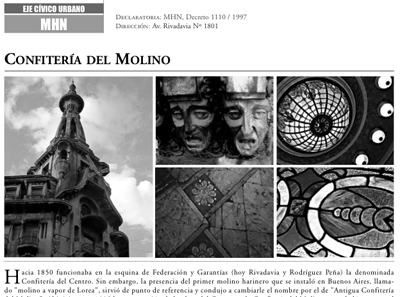
I don’t mind so much. I’m glad the photos are being used for a good purpose. But shouldn’t a national organization be able to do better? Shouldn’t conservation experts have more influence in Congress? At least Basta de Demoler drew attention to the issue earlier last year by offering tea at the building’s entrance. The Confitería del Molino is one of the city’s most recognized landmarks, but it seems like little will be done to save it… until perhaps the dome collapses from neglect onto the crowds below.
Update (07 Mar 2017): It’s finally happened! The national government recently purchased the entire building for about U$D 12 million. Restorations will definitely add more to the final cost of the project, & no opening date has been set. Work in progress is nicely showcased on the building’s Twitter account. The Confitería del Molino might just reclaim its role in porteño society:
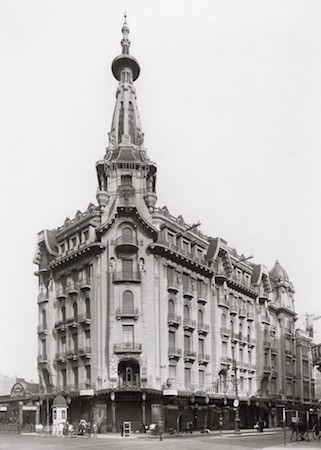
Notes: Top sketch & historical info from “Francisco Gianotti: Del Art Nouveau al Racionalismo en la Argentina” published by CEDODAL (2000). Second photo from SkyscraperPage forum. Additional info from “Buenos Aires Art Nouveau” by Mimi Böhm (2005).
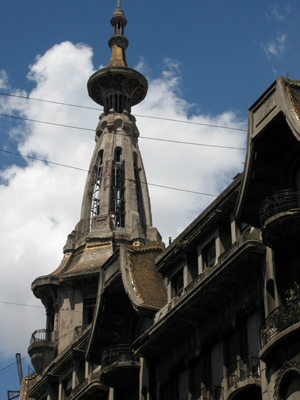
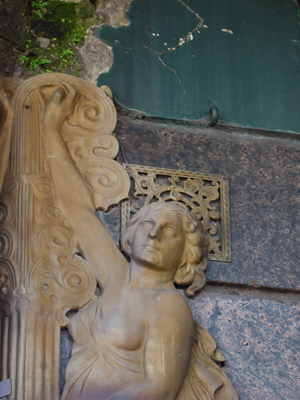
I’m one of the legions of fans of this architectural gem, and it saddens me that more isn’t being done to save it. I believe this is the first time I’ve seen photos of the interior, and it’s just stunning. Sadly, I think your prediction about the building’s fate is more likely to come to pass than any other scenario.
It’s funny because my first visit to BsAs was in March 2000 & the place had closed just a few years before. I thought I’d never get a chance to go inside. It really is magical. If someone bought the CdM, it would make so much money that a large investment would be worth it. And part of the credit goes to the Estudio Abierto staff… a program that Macri shut down. He’s so anti-culture that scares me to think he could win re-election! Let’s hope we’ll all be able to enjoy the CdM in the future.
Every time I walk around the area it feels so sad to see how this gem gets worse and worse. I really can’t understand why bussiness people spend a lot of money in “fashionable” sushi bars or trendy cafes and do not realize this is something worth investing on. We are Argentines…
Hi Ricky – I don’t understand it either. It would cost a small fortune to restore, but because of the building & the location it would make back whatever investment needed to reopen. And like you say, it’s a part of history that should be saved. Saludos!
Pingback: La Confiteria del Molino - Buenos Aires Local Tours | Buenos Aires Local Tours
Pingback: Advent bei 25° | milonguera
Para mi La confiteria del Molino fue en mi ninez algo que esperaba a mi padre que volviera de Trabajar en ese lugar con 1 kg de masas que digo que nunca comi nada mas rico que lo que se fabricaba ahi. Al igual que en Navidad colas de mas de 1 cuadra de largas donde la gente esperaba para comprar los pan dulces echos en la confiteria del Molino, lastima no recuerdo el nombre del maestro pala donde trabajaba en el sotano de este lugar y tambien los ricos sandwiches de miga (donde mi padre mas de una vez tuvo que cortarlos para poder hacer ese tipo de delicia, si tengo muchos recuerdos lindos de este lugar pero reconozco que era otro tipo de gente que es una lastima ya que el pais declino en todo sentido, pero si estoy seguro si alguien tiene nervio puede resucitar este lugar para gran alegria de mucha gente. Saludos. George.